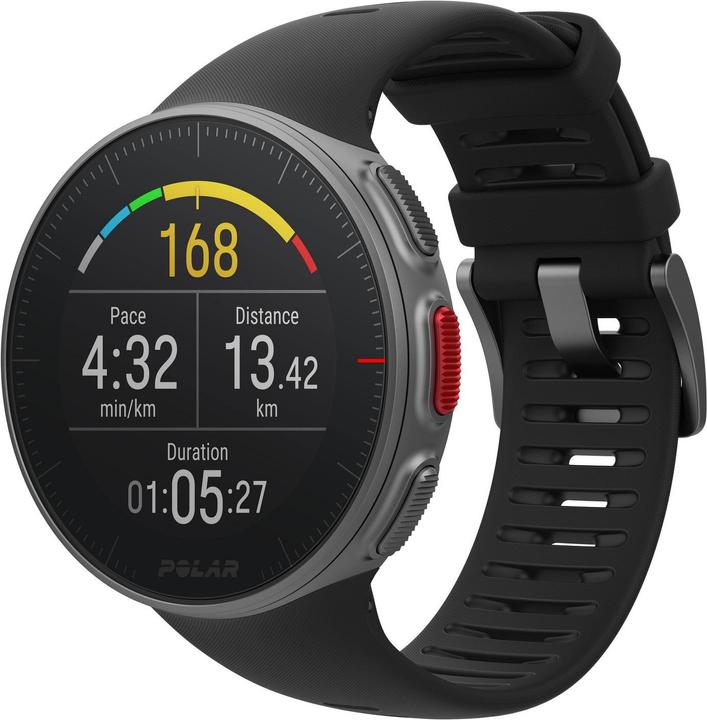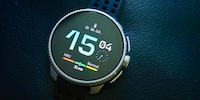

Polar Vantage V Review: From tool to lifestyle
Polar is breaking new ground with the Polar Vantage V. Away from just a tool, towards a lifestyle smartwatch. Is the Finnish brand betraying its tradition?
Polar is legendary. This may sound like praise, but it is both a prestige and a burden for the Finnish company. Since 1977, Polar has made a name for itself as a manufacturer of sports equipment that at least measures the pulse of athletes. Without cables, without large devices. That was revolutionary back then.
For a long time, Polar had the field to itself. But with the rise of smartwatches and smart technology in general, the grande dame of sports watches is facing new competition. For almost 20 years, Polar has had to contend with two strong opponents: Garmin has been on the market with smartwatches since 2003. Suunto with the functional predecessor to today's smartwatches since 2004. Then there are all the calf-biters, smaller brands that make similar promises to Polar but are strongly geared towards a lifestyle segment - Samsung, Huawei, Fitbit and their competitors.
In short, the market is more competitive than ever. Despite the fact that Polar is considered the de facto standard and benchmark for sports watches, the brand cannot rest on its laurels.
This development has led to the Polar Vantage via the functionally flawless but, in modern terms, ugly M600.

With the Vantage series comes the widespread popularisation of Polar's own ecosystem, called Polar Flow. There, all data from all Polar devices is aggregated and analysed for you and, no doubt, for Polar. Market research has never been easier and more complete than when you analyse the data that your users voluntarily give you without asking. But Polar's approach is completely new. With the Vantage series, which includes the Polar Vantage M as well as the V, Polar is breaking new ground.
Polar watches used to look like this.

The vantages, however, are round.

This is just the beginning in terms of innovations and by far the most inconsistent. The Vantage is light, comfortable and unobtrusive. Somehow unspectacular on the hardware side. Nevertheless: the Vantages have it all.
A little bit of lifestyle
Probably the biggest innovation for athletes is the fact that Polar is making the Vantage series a smartwatch and not just a tool for athletes. Thanks to a new software update, you can send notifications from your messaging apps to the watch.
I'm going to say something controversial: I don't want this.
It's not just Polar, but to be honest: I'm already being bombarded with emails and messages all day long, even if I'm extremely restrictive with notifications on both my smartphone and PC. Think about it: how often does WhatsApp or - even worse - Outlook interrupt you when you're doing something that would be much more useful? Outlook notifications are now off. WhatsApp and messenger services only chime in when selected contacts are trying to reach me. Let me write, people.
It's even worse when I'm doing sport. When I'm climbing, I don't want to know that a newsletter has come in and Outlook is too stupid to filter it out. Notifications from our planning tool don't bother me on my bike. I have better things to do. Balance, relaxation, switching off. That sort of thing.
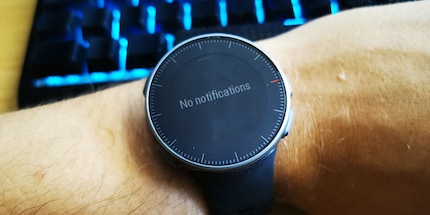
Technologically, however, the notifications work perfectly. Swipe up on the main screen and there they are. If you want to control apps like Spotify remotely, then the Polar Vantage is not for you, because the Vantage is not that smartwatchy. Not yet, maybe.
The crux of the matter with notifications
The fact that I have to opt-in to activate the notifications and that the watch is actually a watch with a sports function only makes the watch more appealing. I really like the peace and quiet on my wrist. And the fact that I don't have to switch off all notifications individually. The only time I go to the trouble of switching on the notifications is on longer bike rides at the weekend.
It turns out that the notification system is not yet fully developed. I usually only receive notifications from selected contacts at defined times on my smartphone. These settings are not adopted by the Polar Vantage. Worse still, as soon as I activate the notifications, the watch does something very strange.
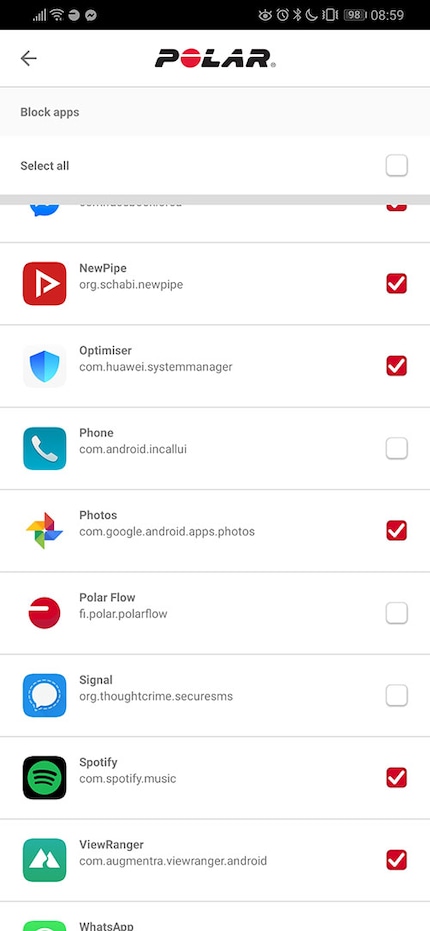
Notifications from individual apps are opt-out. In the strangest opt-out process I've ever seen. Apparently, Vantage cannot retrieve a list of apps from the phone that contains all notification-authorised apps. Instead, the app builds this list itself. This means that all notifications - WhatsApp, Signal, Outlook, Calendar, Spotify, Google Docs and so on - are passed through first. Only after the watch has received a notification can I block the notification in the Polar Flow app, because only then does the app appear in the list. Polar Flow is not yet capable of granular permissions for rest periods or favourite contacts.
Pulse fits
Polar is legendary. As redundant as this statement is - I already mentioned it above, I know - it is just as important for understanding the Polar brand. Because if there's one thing Polar has to be able to do, it's sports functions. Notifications and possibly Spotify and so on are all well and good, but if the heart rate measurement throws up faulty data, then Polar can close up shop. Then the brand has betrayed itself and should do some deep soul-searching. Round housing? Okay. WhatsApp? Easy, fine by me. But sport, that's where the core competence lies.
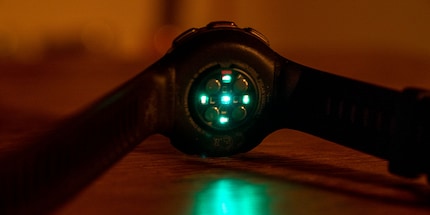
The heart rate monitor on the wrist is such a critical thing. Historically speaking. Because the technology is relatively new. As with any new technology, a number of things came together at the launch of optical heart rate monitors that led to the system being discredited.
- The industry invented something completely new or brought it into this form for the first time
- Marketing declares the thing to be the Second Coming of Technology-Jesus. How did you ever manage to live without it?
- Buyers believe it, buy and somehow end up getting nothing out of it
The reason for the third: The technology is usually not yet mature. Or if mature, then not perfected. Sure, watches used to measure your pulse back then. But the ability to measure your pulse with an LED that shines through your skin and illuminates your blood vessels to detect your pulse does not mean that the readings are reliable. Or were. Because that was precisely the problem when Samsung launched the second generation of its smartwatch. Sure, the technology worked. But the readings were somewhere between cardiac arrest and palpitations at random times.
Polar, on the other hand, has always relied on the chest strap, to the point where Polar and chest strap were barely separable: You can't take a heart rate without a chest strap and you can't record data without a watch. If Polar now moves away from the chest strap, then the Finnish brand has two problems:
- The measurements must be correct, because they have been correct since 1977
- How can the chest strap be justified if the wrist measurements are correct?
The good news is that the wrist measurements are correct. You have to twist the watch quite a lot or wear it in a grossly different way for the sensor to throw out values that cannot be correct. Otherwise, we are talking about a deviation of plus or minus five heartbeats per minute. This may be too much for professional athletes, but for amateurs and ambitious amateurs, plus minus five should be enough.
The bad news: both the chest strap and the OH-1 wristband monitor are superfluous. At least if you like climbing walls, running or cycling. You can do an orthostatic test with the chest strap that tells you how recovered you are, but I dare say that in an emergency, the wristband sensor would do the same. Even if the chest strap works differently technologically: It measures your heartbeat with electrodes and not LEDs.
The OH1 wristband? Only used during a short test phase, didn't see the point, was uncomfortable. I quickly got used to the chest strap, but the wristband annoyed me no matter what exercise I did. This is worth a warning, as the watch and chest strap are available as a bundle, but the OH1 has to be bought separately. So before you drop almost 100 quid, try out whether you can exercise comfortably with a strap around your upper arm. The optical sensor on your arm provides you with the same data as the one on your wrist and the one on your chest. Give or take five strokes.
Training done... now what?
If you are a bit more ambitious and interested in sports, then data-driven or data-influenced training is obvious and interesting. The data from the orthostatic test also gives you at least an indication of what you can expect from the day's training. You can also read out a long-term trend.
The data is read from your Polar watch and transmitted to Polar Flow via a smartphone app (Android or Apple iOS or a cable connection with a PC or Mac and an installed synchronisation tool. There, the data is analysed and presented in all kinds of diagrams so that you or your trainer can see an overview of your success and weaknesses
But be careful: much of the data is difficult for laypeople to interpret clearly. Just because your heart is doing something somewhere doesn't necessarily mean that something is wrong. So before you embark on a radical data-driven workout, talk to a trainer about it. Because that's what they're there for. A smartwatch or the internet will never be able to give you reliable medical or sports advice without first talking to a doctor or trainer.

An example: I deliberately include exercises and sequences in my training that push my heart rate into the red zone, i.e. the anaerobic zone. That's where it starts: Unlike in the general world, red does not equal bad. Not necessarily. It can be bad, but it doesn't have to be. My coach decided that I should work briefly in the red zone, told me so and also stated that it had to be that way. A certain amount of anaerobic training also has its advantages. He then looks at my anaerobic times after a while and adjusts my workout accordingly.
I don't work much with the data myself. I count a few calories, measure my weight with the Polar Balance and record my sleep. That's actually it. Flow is practical because I can export the data. My trainer is therefore not dependent on any apps or logs. A workout can be downloaded and sent in CSV format. Workouts can also be fed into the Google calendar if required.
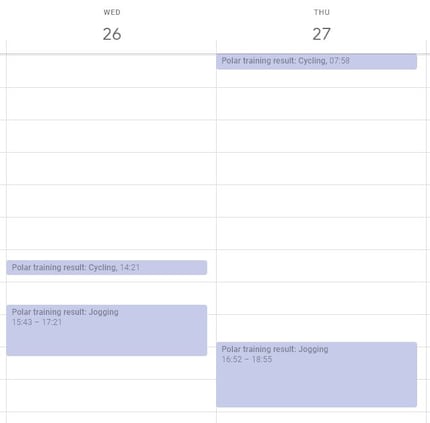
I really like the Vantage. It performs well, allows a lot of freedom and the battery only needs to be recharged every few days. Speaking of charging: You need a separate cable to charge the Vantage. If you don't have this with you and you run out of battery, then you have a problem. That's why I recommend investing in a second cable for travelling. Then you're sure to have a fallback at home.
If you're looking for lifestyle and clickbait haitaitai, then you're definitely in the wrong place with the Polar Vantage. The Vantage is a tool. It doesn't delude you with notifications and remote music control. It's there to give you data about your training, analyse it and give you advice. The rest is all extra. The fact that it shows the time is more or less a coincidence. And that's a good thing.
In short: Polar is legendary and will remain so.
Journalist. Author. Hacker. A storyteller searching for boundaries, secrets and taboos – putting the world to paper. Not because I can but because I can’t not.

